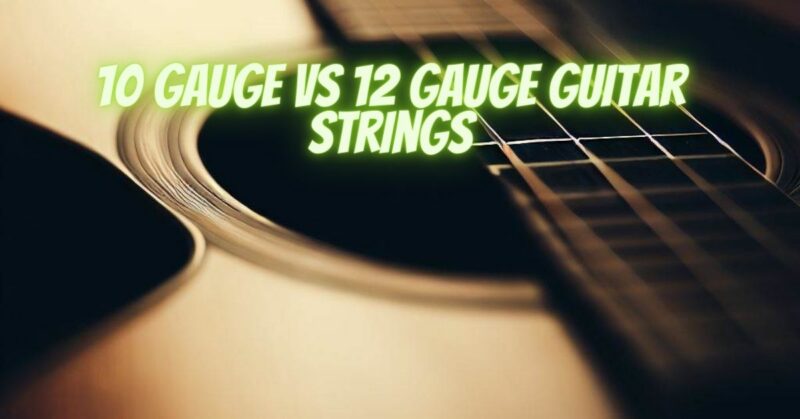Selecting the right guitar strings is a crucial decision for every guitarist, as it directly affects playability, tone, and overall performance. Two common string gauges frequently compared are 10 gauge and 12 gauge. In this article, we’ll explore the differences between these gauges, their impact on playability and tone, and help you determine which set might be the best fit for your playing style and musical preferences.
Understanding String Gauges:
String gauge refers to the thickness of the individual strings in a set, typically measured in thousandths of an inch. The gauge of the strings can significantly influence how the guitar feels and sounds.
10 Gauge Guitar Strings:
10 gauge strings are generally considered “light” gauge and are a popular choice for many guitarists, especially beginners and players who prefer a lighter touch. They offer ease of playability, as they require less finger pressure to fret notes and execute techniques like bending and vibrato. The lower tension of 10 gauge strings can also be advantageous for those with hand strength concerns or for players who prioritize speed and agility.
12 Gauge Guitar Strings:
12 gauge strings are categorized as “medium” gauge and have a slightly larger diameter than 10 gauge strings. They offer a fuller tone with more emphasis on the mid-range and bass frequencies. Due to their increased tension, 12 gauge strings can provide enhanced sustain and projection, making them favored by players who seek a richer, more resonant sound.
Playability and Technique:
The choice between 10 gauge and 12 gauge strings is closely linked to playability and technique:
- Ease of Playability: 10 gauge strings are generally easier to play due to their lower tension and thinner profile. They can be more forgiving on the fingers and suitable for those who are just starting their guitar journey.
- Control and Resonance: 12 gauge strings offer more control and resonance, especially for players who prefer a more substantial feel and desire increased sustain and power when playing chords and single notes.
Tonal Characteristics:
String gauge significantly impacts the tonal characteristics of the guitar:
- 10 Gauge Tone: 10 gauge strings often produce a brighter and more treble-focused tone due to their lower mass and tension. This tonal quality can be well-suited for genres that require clean, articulate playing and solo work.
- 12 Gauge Tone: 12 gauge strings provide a warmer and fuller sound, with more emphasis on the mid-range and bass frequencies. They can add depth and richness to chords and are favored by players in rock, blues, and other genres where a beefier tone is desirable.
Finding the Right Fit:
The choice between 10 gauge and 12 gauge strings ultimately depends on your playing style, musical preferences, and the sound you want to achieve:
- 10 Gauge Strings: Choose 10 gauge strings if you prefer easy playability, a brighter tone, and value a lighter touch for techniques like bending and vibrato. They are great for beginners and players who prioritize speed and agility.
- 12 Gauge Strings: Opt for 12 gauge strings if you seek enhanced sustain, fuller tone, and more control over your sound. They are favored by players who want a more substantial feel and a beefier tone for chords and single-note playing.
Experiment and Explore:
As a guitarist, don’t be afraid to experiment with different string gauges to discover your ideal fit. Some players even use hybrid sets, combining different gauges to achieve a customized feel across the fretboard.
Ultimately, the best string gauge for you is the one that enhances your comfort, complements your playing style, and brings your musical vision to life. Embrace the journey of exploration, and let the interplay of string gauge and your artistic expression guide you to the perfect set that resonates with your heart and soul.


